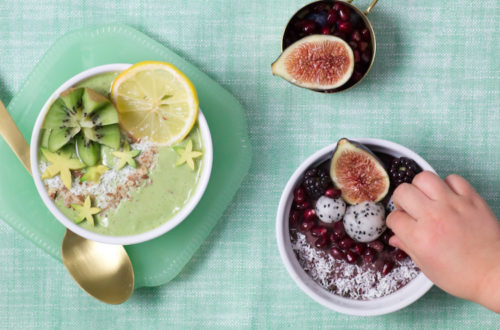Well my friends, today is officially the last day of bread week, and as I type, I still have dough underneath my fingernails and a fine dusting of flour covering every square inch of my kitchen.
I’m not going to lie: This was a lot harder and more time consuming then I thought it would be. My mixer is on the verge of suicide (it was literally walking itself off the table with a loud thumping noise on that last large batch of dough), and I am in a carb-induced coma.
But I’ve learned a lot and gained some serious patience along the way. And I can’t tell you how rewarding it was to pull those final baguettes out of the oven and marvel at their crusty, golden-brown beauty.
The french baguette, the Holy Grail of all all breads (well, maybe it’s sourdough, but I haven’t had enough time to make a starter, OK??) is the perfect end to a week of endless kneading, bagel/pita heartbreak and overall triumph.
French Baguette
Adapted from Joe Pastry’s recipe (this is a VERY helpful blog for all you baking beginners out there—thanks to Sara at I Am A Food Blog for the tip!)
You’ll need:
3 1/2 cups bread flour
1 1/2 teaspoons yeast
3 teaspoons salt
1 1/4 cup lukewarm water
1 1/3 cup poolish (see Joe Pastry’s instructions, but be sure to double his measurements)
A small chunk (5-10 oz) of old dough (dough that has been in the fridge for 1-3 days)
First, you should have a chunk of old dough before you start. You can make some just for this purpose, again using instructions from Joe Pastry, or you can set some dough aside from another bread. I used some from my pitas.
Then, about 12-16 hours before you are going to start the dough, make your poolish.
It should be bubbly and foamy when it’s ready.
When the poolish is ready, mix the yeast and the water. Combine this with the poolish and flour and mix until incorporated. Chances are you may need a little more flour, but don’t worry, you can add that little by little as you knead. Let this sit for 20 minutes.
Now mix in the old dough (torn in pieces) and the salt and knead for 10 minutes or until the dough is smooth and passes the windowpane test. It should still be a little tacky, but not so much that it’s impossible to work with. Put the dough in an oiled bowl covered in cling wrap and allow it to double in size (about 1 1/2 to 2 hours).
When the dough is done proofing, separate it into six equal sized balls, and the form them into football shapes and let rest for 10 minutes. Next time I’ll do this all on parchment to make it easier to transfer to the pizza stone (I tried to transfer the loaves to parchment after the final proof and it was difficult to say the least)
Then, take your hand and create an indent in the bottom of each loaf like so:
Then fold and pinch them together like this:
Apparently this creates tension on top for a nicer looking baguette, but I’m not sure if this did much for mine. Now roll these out into long, thin baguettes:
You can refrigerate these at this point (this makes the flavor better, they say. I refrigerated three and baked the other three) or let them rest for another 30 to 40 minutes. In the mean time, heat your oven to 500 with a pizza stone and a broiler tray in it.
When ready to bake, slice diagonally down the loaf (more vertical than horizontal). I think my loaves were a little too wet, or my knife not sharp enough, because this didn’t work very well for me. No biggie—this is just for show. Dust lightly with flour and slide the loaves (still on the parchment paper) onto the pizza stone.
Then pour a cup of hot water in the broiler tray and quickly close the oven.
Bake for 25-35 minutes, until golden brown.
My baguettes weren’t as pretty as Joe Pastry’s, but they were still completely delicious.
Well, thank you all for tagging along for this very LONG week. I’ll post within the next day or so to share the tips and tricks I’ve learned about bread making during this adventure.



12 Comments
Jackie at PhamFatale.com
I’m definitely going to give this a try. It looks beautiful. You should submit it to the bread contest on my site. The winner gets a $179 Super Bread bread knife from New West Knifeworks. You can get more info here:
http://www.phamfatale.com/id_516/title_Pham-Fatale-Bread-Contest/
http://www.phamfatale.com/id_570/title_18-More-Days-until-the-End-of-the-Bread-Contest/
Best,
Jackie
Pingback:
robert
Hi,
You are folding wrong. Please no offence. dont fold like they show you in books. flod into a tight ball, and pince the seams just a little. turn, and fold it again. Then fold it again ! Then rest it in the frig for 24 hours, take it out, and fold it again.Put it into a bowl, and let it rise to less than double. Dump it on the counter top, and slowly streech it out to a baguette shape. The hioles will be HUGE ! The inside will look like wet glass !
Laura
Hi!
I have had this bookmarked for a few weeks and finally got around to making it! I baked the baguettes tonight and while they were crispy and tasted excellent (which, really is the most important part!), they didn’t look as nice as yours! Though parts were brown, I didn’t get the all over caramel brown color of yours. I used a broiler pan but substituted a cookie sheet with parchment paper on it for the pizza stone, since I don’t have one.
Do you have any tips on how I can get that nice color?
I love your blog, thanks so much for the easy to follow instructions and beautiful pictures!
Laura in NC
admin
Thanks! Did you try the water trick? That makes the outside really crusty, which I would think would help with the color. I would also say just leave it in the oven a little longer perhaps? I’ve also seen recipes that call for unbleached bread flour, which may make the color darker. Hope that helps!
Self Catering Donegal
yummy bread thanks for the recipe
kisha
You say to double Joes poolish messurements, it means that i have to use
for the poolish:
18 oz bread flour,
1/4 teaspoon instant yest
4 or 5 ounces of lukewarm water
keep this in the refrigerator until I prepare the bread.
take this out to be used at room temperature
sorry my english is not so good
but this is what i understood.
please i will be very glad to have an answer. thanks and I like your blog.
admin
No problem Kisha! I just looked and realized that the URLs for the poolish recipe changed, for some reason. Here is the poolish recipe: http://www.joepastry.com/2009/how_to_make_a_poolish_sponge/. So to double it for my recipe, you would need 8 oz flour, mixed with 4 teaspoons of the yeast and water mixture (so first, mix 1/4 teaspoon yeast with 4 oz water, then take 4 teaspoons from that mixture). So mix the 8 oz. flour with the 4 teaspoons of the yeast/water mixture and 8 oz water. Once you have mixed this, you will have to leave it out at room temperature for 12-16 hours, meaning you need to prepare your poolish about a day before you begin making your bread. If the poolish is ready before you are ready to make your bread, put it in the fridge, but bring it back up to room temp before you use it for the bread. Hope this helps!
christine saqui
You are an excellent writer–you made me laugh this morning. Also, I love the shot of your hand with dough and the description of your kitchen. I can relate. Thank you!
Cecelia O'Leary
can this same dough be used to bake one big loaf? Instead of thin baguettes? Say in a Dutch oven? I’d like to bake the bread but am so short on time and would love to avoid the step of shaping the dough
admin
Yup, absolutely! I did this a few months ago with this recipe.
Maria Leticia Santiago
Boa noite !! Gostaria de fazer todas as receitas mas estão todas em ingles …. Como faço pra traduzir ? Abraços